Exploring Rejuvenation Through Stem Cell Research
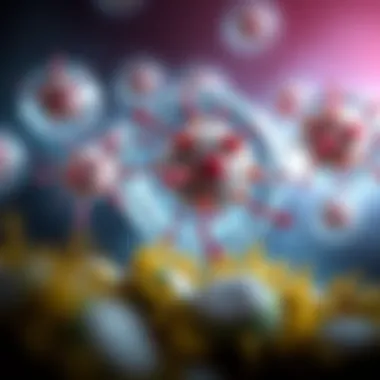
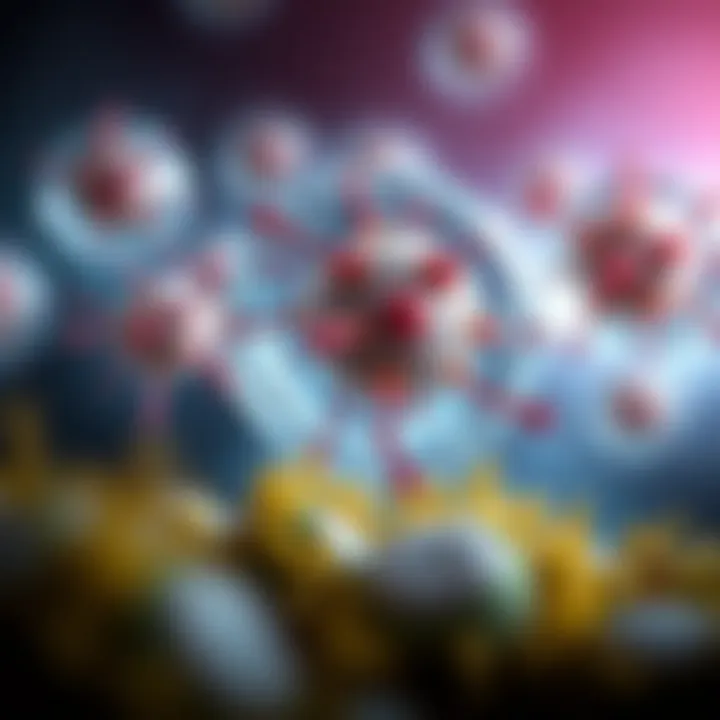
Intro
In recent years, the field of stem cell research has seen a wave of advancements, particularly in the area of rejuvenation. Research aims not just at repairing damage but also at reversing the aging process itself. This deep dive hopes to shed light on what makes this field so compelling. What’s at stake? Well, quite a bit if you consider the potential for improved health and enhanced longevity.
The article will traverse the foundational concepts of rejuvenation stem cell research, outline various stem cell types, dissect their applications in regenerative medicine, and examine the scientific principles behind their rejuvenating capabilities. The ethical concerns surrounding this emerging technology cannot be overlooked. As we navigate through this landscape, we will discuss ongoing research projects and the those prospects that promise to redefine our understanding of health and aging.
There's a palpable excitement in the air as scientists tirelessly work to unlock the mysteries of stem cells. As every new study emerges, it adds another brushstroke to the broader canvas of rejuvenation research. With investment flowing in and scrutiny intensifying, it’s crucial to approach this evolving field with both curiosity and caution.
Preamble to Rejuvenation Stem Cells
The realm of rejuvenation stem cells is nothing short of captivating. It stands at the crossroads of biology and technology, promising to reshape how we understand aging and regeneration. Rejuvenation through stem cells is a concept that once seemed like science fiction, yet here we are, inching closer to realizing the dreams of renewed health and longevity. This increasing interest in stem cell research uncovers a landscape filled with potential, challenges, and ethical considerations.
Definition and Scope
At its core, rejuvenation stem cell research revolves around understanding how stem cells can regenerate failing tissues and rejuvenate aging systems. To define it clearly: rejuvenation stem cells can be classified into several types, including embryonic stem cells, adult stem cells, and induced pluripotent stem cells. Each of these types offers unique properties that scientists are studying vigorously.
Embryonic stem cells, often derived from early-stage embryos, hold the remarkable ability to develop into any cell type in the body. This characteristic makes them a hot topic for research but grapples with ethical implications. Adult stem cells, on the other hand, exist within various tissues and are more limited in their conversion capabilities. Lastly, induced pluripotent stem cells are generated from adult cells through genetic reprogramming, sparking significant interest as they combine ethical advantages with versatile applications.
The scope of this research ranges from basic biological questions to clinical applications aimed at treating diseases like Parkinson's, diabetes, and heart conditions. Stem cells are not solely confined to therapy for age-related diseases; they also hold function in pharmacological testing and personalized medicine, providing a multi-faceted area of exploration.
Importance in Modern Science
The significance of rejuvenation stem cells cannot be overstated. They represent a beacon of hope in the quest to combat degenerative diseases and the natural aging process. In modern science, these cells have ignited a revolutionary shift towards a deeper understanding of human biology and pathology. Here’s why this field stands tall in the scientific community:
- Potential for Healing: Stem cells possess the intrinsic ability to repair and regenerate damaged tissues. This opens the door to novel treatments that were previously unthinkable.
- Understanding Diseases: By studying stem cells, researchers can model diseases in a laboratory setting, gaining insights into how conditions develop and finding potential therapeutic avenues.
- Personalized Medicine: With their regenerative capabilities, stem cells may play a crucial role in developing treatments tailored to individual patients, addressing the unique nuances of their conditions.
"The study of stem cells holds the key to uncovering mechanisms of regeneration that could one day trick our bodies into healing themselves seamlessly."
However, the challenges and ethical considerations are equally important to address. Researchers need to navigate a complex web of regulations, ethical concerns, and the public's perception of stem cell research. The balance between advancing science and respecting ethical boundaries is a delicate one. As this field progresses, its implications could lead to groundbreaking advances in health and longevity. Understanding these fundamentals sets the stage for the sections that follow, providing a clearer view into the transformative potential of rejuvenation stem cells.
Types of Stem Cells in Rejuvenation
The landscape of rejuvenation stem cell research is diverse and intricate, encapsulated within various types of stem cells, each with unique characteristics, applications, and implications. Understanding these differences not only highlights their individual strengths but also draws a clearer picture of how they contribute to the broader goals of regenerative medicine. In this section, we delve into three primary types of stem cells: embryonic stem cells, adult stem cells, and induced pluripotent stem cells. Each type plays a critical role in advancing our knowledge and capabilities in rejuvenation therapies, offering a promising pathway toward restoring health and vitality.
Embryonic Stem Cells
Embryonic stem cells, derived from the inner cell mass of a blastocyst, possess remarkable pluripotent capabilities. This means they can differentiate into any cell type in the body. The potential applications of these stem cells in rejuvenation therapies extend from treating degenerative diseases to enhancing tissue repair. One of the most significant advantages of embryonic stem cells is their inherent versatility. Scientists can grow them indefinitely in the lab while retaining their ability to transform into specialized cells.
However, the use of embryonic stem cells is fraught with ethical debates and regulatory challenges. Many people argue about the moral implications of using human embryos for research, which often stymies funding and broad regulatory approval.
“While the potential for breakthroughs in health is immense, scientists must navigate complex ethical waters that can hinder research progress.”
Adult Stem Cells
Adult stem cells, found in various tissues such as bone marrow, fat, and even the brain, have a more limited differentiation capacity compared to their embryonic counterparts. They’re primarily responsible for the repair and maintenance of the tissues in which they reside. Despite this limitation, adult stem cells have shown their value in many rejuvenation therapies. Their use has been prominent in hematopoietic stem cell transplantations, which are crucial for treating blood-related disorders like leukemia.
The advantages of adult stem cells include a lower ethical controversy compared to embryonic stem cells and the ability to deploy them from the patient’s own body, decreasing the risk of rejection. Nevertheless, their limited ability to differentiate poses a challenge in applications aimed at broader revitalization efforts.
Induced Pluripotent Stem Cells
Induced pluripotent stem cells (iPSCs) represent a groundbreaking advancement in stem cell research. By reprogramming adult cells to revert to a pluripotent state, researchers can effectively generate stem cells that behave similarly to embryonic ones. This innovation resolves many ethical concerns associated with embryonic stem cells while maintaining the versatility essential for regenerative medicine.
The implications of iPSCs in rejuvenation are vast. They not only provide a virtually limitless source of cells for research and therapy but also offer the potential for personalized medicine approaches, where treatments can be tailored specifically to the individual’s genetic makeup. Despite these advantages, the process of generating iPSCs can be resource-intensive and not devoid of challenges, including tumorigenicity or the growth of unwanted cells after differentiation.
In summary, the types of stem cells utilized in rejuvenation research are varied and significant. Each has its unique contributions, challenges, and ethical landscapes, which must all be navigated thoughtfully. As research progresses, there is much to look forward to, especially as scientists develop innovative techniques to overcome current hurdles.
Mechanisms of Stem Cell Rejuvenation
The mechanisms underlying stem cell rejuvenation are pivotal to understanding how these unique cells can revolutionize medical treatment. It includes a spectrum of processes that enable stem cells to not only repair but also enhance the functionality of damaged tissues and organs. Exploring these mechanisms provides crucial insights into potential therapies that can alleviate the burden of age-related diseases and conditions, making it an essential section of this article.
Cellular Repair and Regeneration
At the heart of stem cell rejuvenation is the capability for cellular repair and regeneration. When tissues suffer from injury or degeneration, stem cells can step up to the plate, responding to signals that indicate damage. They differentiate into the specific cell types needed to replace lost or dysfunctional cells. Think of them as skilled tradespeople who, when called upon, know exactly which tools to use and what materials to bring. This ability is essential in scenarios such as myocardial infarctions, where heart tissue is irreversibly damaged. Stem cells can fill those gaps, drastically improving patient outcomes.
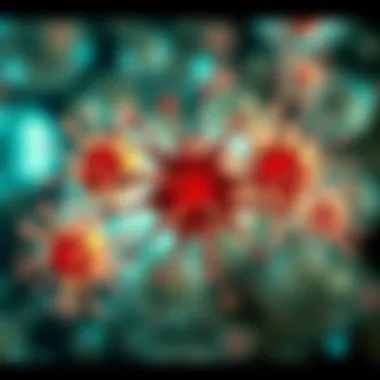

Research has shown that stem cells can secrete various cytokines and growth factors that help in the healing process. These substances not only promote cell survival but also encourage neighboring cells to take part in regeneration. Some studies even suggest that the umbilical cord-derived stem cells can release compounds that have anti-inflammatory effects, providing a further layer of protection during healing. This intricate interplay of cellular activities is fundamental in advancing regenerative medicine and offers hope for chronic conditions like arthritis or diabetic wounds.
Tissue Replacement Strategies
Tissue replacement strategies are fundamental when discussing the practical applications of stem cell research. One of the most significant challenges in regenerative medicine has been how to effectively replace damaged tissue. Current strategies utilize different types of stem cells based on the tissue being targeted. For example, mesenchymal stem cells are often used in orthopedic applications due to their ability to differentiate into bone and cartilage cells.
Moreover, recent advances have introduced bioengineering techniques, such as 3D bioprinting, that enable the creation of scaffolds populated with stem cells. This innovative approach allows for the development of 'off-the-shelf' tissue grafts. Clinical trials using these grafts have yielded promising results, demonstrating that they can integrate well within the host tissue, restore function, and even reduce rejection risk.
"Stem cells represent a frontier in medicine, offering not just hope, but a tangible pathway to restoring health where traditional therapies have failed."
Immune System Modulation
The interaction between stem cells and the immune system is another exciting area of study. Stem cells possess an inherent ability to modulate immune responses. This is particularly important in therapeutic contexts, as inflammation frequently impedes healing. It can lead to chronic conditions or allogeneic transplant rejection.
Research suggests that stem cells, particularly those derived from bone marrow or umbilical cord blood, can induce a state of immune tolerance. They have been shown to release factors that inhibit excessive immune activation and promote a balanced response, effectively allowing for better integration into the host's system. Understanding this capability opens avenues for new treatments in autoimmune diseases, where the immune system misbehaves.
Further exploration of these interactions may also provide insights into creating novel therapies for transplant patients, which would enhance success rates significantly.
In summary, the mechanisms of stem cell rejuvenation encompass cellular repair, innovative replacement strategies, and impactful immune modulation. Each of these areas contributes to a holistic understanding of how stem cells can address various medical challenges, offering a glimpse into the future of regenerative medicine.
Applications of Rejuvenation Stem Cell Therapy
The realm of rejuvenation stem cell therapy presents a treasure trove of applications that have the potential to revolutionize healthcare. These therapies have made significant inroads in various domains of medicine, offering hope where traditional treatments have faltered. In this section, we’ll unpack three pivotal applications—orthopedics, cardiovascular health, and neurological conditions—delineating their significance in the field of regenerative medicine.
Regenerative Medicine in Orthopedics
Orthopedic applications of stem cell therapy have shown considerable promise in addressing musculoskeletal injuries and degenerative diseases. Conditions like osteoarthritis and tendon injuries often result in chronic pain and decreased mobility, significantly diminishing the quality of life for many individuals.
In the orthopedic realm, stem cells play a crucial role in healing damaged cartilage, tendons, and bones. They can be sourced from various tissues, including bone marrow and adipose (fat) tissue. Once injected into the injured area, these cells can differentiate into specialized cells, contributing to tissue repair.
Research has revealed a few key benefits:
- Enhanced Healing: Stem cells can potentially accelerate the repair process, providing quicker relief and return to normal function.
- Reduction of Inflammation: They have anti-inflammatory properties that not only mitigate pain but also promote healing.
- Long-term Pain Relief: Studies have indicated that patients experience a significant reduction in pain for extended periods following treatment.
Nevertheless, while the results are promising, some challenges remain, such as standardizing the procedures and ensuring optimal patient outcomes.
"Stem cell injections are paving new pathways for those plagued by orthopedic injuries, allowing some to regain lost functions and put their best foot forward again."
Cardiovascular Applications
The heart, often termed the body's engine, might one day run with the aid of rejuvenation stem cell therapies. Cardiac conditions such as heart failure and myocardial infarctions (heart attacks) lead to the death of heart tissue, compromising its function. Stem cells are being evaluated as a method to repair or regenerate damaged heart tissue, something that could vastly change the landscape of cardiovascular treatment.
Two main avenues are under exploration:
- Direct Injection of Stem Cells: By injecting stem cells directly into the heart, researchers aim to foster regrowth of tissue and blood vessels.
- Cardiovascular Tissue Engineering: Combining stem cells with biomaterials to create patches or constructs can further enhance healing and regeneration.
The benefits here are manifold:
- Improved Heart Function: Early clinical trials suggest enhanced heart function in patients treated with stem cell therapy, which may lead to a better quality of life.
- Potential Reversal of Cardiac Damage: Unlike conventional treatments that manage symptoms, stem cell therapy offers the potential to reverse damage.
- Reduced Need for Transplants: If these therapies continue to develop, they may significantly lower the reliance on heart transplants, which are in short supply.
Neurological Conditions and Stem Cells
Neurology is perhaps one of the most intriguing fields for stem cell applications. Disorders such as Parkinson's disease, multiple sclerosis, and spinal cord injuries pose vital challenges for medical science. Stem cell therapy offers a glimmer of hope for patients suffering from these often debilitating conditions.
In this context, stem cells are being examined for their potential to:
- Replace Damaged Neurons: This opens up possibilities for reversing deficits in motor and cognitive functions.
- Promote Neuroprotection: Certain stem cell types may protect existing neurons from further damage.
Moreover, some benefits of stem cell applications in neurology include:
- Restoration of Mobility: Clinical trials show promise in restoring movement in patients with spinal cord injuries.
- Improved Cognitive Function: There is ongoing research to understand how stem cells can rejuvenate brain function, showing positive outcomes in cognitive terms.
- Personalized Treatment Opportunities: Each patient’s stem cell therapy can be tailored, offering a potential edge over standard treatment protocols.
However, just like in other applications, the hurdles are as palpable as the promise. The complexities involved in navigating the human brain and nervous system present both scientific and ethical challenges that researchers are rigorously examining.
In summary, the applications of rejuvenation stem cell therapy span a wide range of medical arenas, each characterized by sophisticated mechanisms and notable potential for patient recovery and improved quality of life. The pursuit of knowledge in this area not only pushes the boundaries of medical science but also opens up dialogue on the ethical and practical dimensions that accompany such transformative technologies.
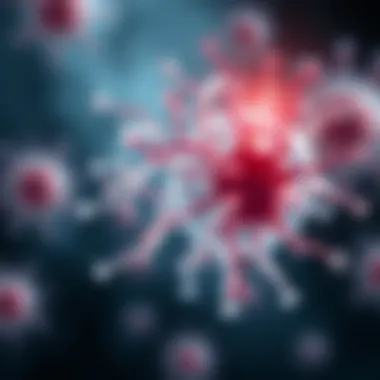

Current Research Trends
The landscape of rejuvenation stem cell research is constantly shifting, pulled in various directions by innovations, clinical observations, and evolving ethical paradigms. Understanding these current research trends is pivotal, as they highlight not only the progress made in regenerative medicine but also the potential challenges and opportunities lying ahead.
Innovations in Lab Techniques
Recent years have seen a remarkable leap forward in laboratory methodologies that underpin stem cell research. New technologies like CRISPR-Cas9 gene editing are becoming more accessible, enabling scientists to make precise alterations at the genetic level. This capability leads to enhanced specificity in the development of cell lines used for research, which is vital for ensuring that the outcomes of studies are reliable and reproducible.
Additionally, advancements in 3D bioprinting techniques have broadened the horizons for creating organoids—miniaturized organs grown in vitro. These organoids provide not only a closer mimic of human physiology but also a valuable platform for testing the effects of potential therapies at unprecedented speed and accuracy. Researchers now stand at a crossroads where the convergence of biology and engineering continuously drives the potential for breakthroughs in cellular therapy.
Clinical Trials and Findings
Clinical trials stand as the cornerstone of validating the real-world effectiveness of stem cell therapies. Trials exploring the application of adipose-derived stem cells for treating osteoarthritis have begun to yield promising results. Patients report not just alleviation of pain but also improved function, hinting at a transformative change in traditional treatment paradigms.
Moreover, ongoing studies involving the transplantation of engineered cardiac tissue derived from induced pluripotent stem cells are providing insights into recovery avenues for heart disease. These trials provide crucial data that can effectively shift the landscape, informing regulatory bodies about safety and efficacy, thereby encouraging wider acceptance of stem cell therapies in clinical practice.
Discovery of New Stem Cell Niches
A less commonly discussed yet vital aspect of current research pertains to the identification of previously unknown stem cell niches. Traditionally, much of the focus has been on well-characterized areas like bone marrow or certain types of tissues. Recent studies are starting to uncover that stem cells exist in various unexpected locales, including the adipose tissue and the brain, contributing to regenerative processes in ways that were not fully appreciated before.
For instance, scientists are now examining the role of neural stem cells in the adult brain—previously thought to be a stagnant environment. This newfound appreciation for the complexity of stem cell niches aids in illuminating how microenvironments influence stem cell behavior and therapeutic potential.
"Understanding the microenvironment of stem cells is like discovering a new country in the realm of biology, revealing uncharted territories that promise significant advancements in rejuvenation therapies."
In summary, current research trends reflect a blend of pioneering lab techniques, insightful clinical trials, and a deeper understanding of the biological niches where stem cells reside. Each of these areas plays a critical role in shaping the evolving narrative of rejuvenation stem cell research, keeping the door open for exciting possibilities that hold the promise of enhanced health and longevity.
Ethical Considerations in Stem Cell Research
The ethical landscape surrounding stem cell research is not just complex; it's vital to the integrity and future of this field. As scientists venture deeper into the possibilities offered by stem cells, they must navigate a minefield of moral questions that touch on the essence of life itself. Understanding these ethical considerations is essential for researchers, policymakers, and the public alike. It influences funding decisions, legislative measures, and even public acceptance of new therapies derived from these cells.
Debates Surrounding Embryonic Stem Cells
When it comes to embryonic stem cells, debates can get heated. These cells hold incredible potential for regenerative medicine, making them highly coveted in research. However, they are derived from embryos, which brings up significant ethical concerns about the status of that embryo. Some argue that creating or using embryos solely for research purposes is akin to commodifying human life, while others insist that the potential benefits for treating devastating diseases justify their use.
At the core of this debate lies a question of moral status. Is an embryo just a cluster of cells, or does it have any rights? Many religious and philosophical traditions weigh in on this issue, complicating the dialogue even further. Compromises, such as using surplus embryos from in vitro fertilization procedures, have been proposed but often come with their own set of ethical dilemmas. Navigating this landscape requires not only scientific knowledge but also a deep understanding of societal values and beliefs.
Regulatory Frameworks and Compliance
The legal frameworks governing stem cell research play a paramount role in shaping what is permissible in labs across the globe. These guidelines dictate how embryonic stem cells can be sourced and utilized, ensuring that ethical standards are met. In the United States, for instance, federal funding restrictions have limited the scope of embryonic stem cell research, steering many institutions to focus on adult stem cells or induced pluripotent stem cells instead.
Globally, the regulatory landscape varies significantly. Some countries have straightforward frameworks that encourage research but impose strict guidelines, while others may have more lenient or even absent regulations. This inconsistency can lead to "research tourism," where scientists or companies relocate to regions with less stringent oversight, raising concerns about ethical compliance and scientific rigor.
Ultimately, robust regulatory frameworks play a dual role: they help protect individual rights and maintain public trust in scientific endeavors. To foster innovation while upholding ethical standards, ongoing dialogue among scientists, ethicists, and lawmakers is essential.
Public Perception and Ethical Responsibility
Public perception of stem cell research significantly influences its advancement. Awareness campaigns and educational efforts can help demystify stem cells, yet misinformation or sensationalized stories can twist public understanding. Concerns about playing "God" or ethical violations can lead to public backlash, which impacts funding and research opportunities.
Researchers have an ethical responsibility to be transparent about their work and its implications. They must engage with the community to address fears and explain the potential benefits without downplaying ethical considerations. This can be challenging, especially when dealing with customized treatments or controversial methodologies.
Inclusion of community voices not only builds trust but also enriches the research landscape with diverse perspectives. Addressing public concerns in an open and honest manner is crucial for laying a solid foundation for future stem cell therapies and ensuring that the promise of rejuvenation does not come at a moral price.
"Navigating the minefield of ethical considerations in stem cell research is as crucial as the scientific breakthroughs themselves."
Challenges in Stem Cell Therapy Development
The journey of stem cell therapy is a winding road filled with various challenges that can hinder its progression. Understanding these challenges is crucial as they underscore the significance of this field and the need for innovative approaches to overcome them. Addressing these hurdles is not merely a scientific endeavor but a holistic undertaking that involves technical, financial, and societal dimensions.
Scientific and Technical Hurdles
One of the major stumbling blocks in stem cell therapy development is the scientific and technical hurdles researchers face. This encompasses a myriad of issues, including:-
- Quality Control: Ensuring consistency and purity of stem cell lines is imperative. Variability in cell cultures can lead to unreliable results, therefore, stringent standards must be established.
- Differentiation Complexity: The process of directing stem cells to mature into specific cell types remains complicated. Inefficient differentiation can yield inadequate or unwanted cell types inappropriate for therapeutic applications.
- Integration with Host Tissues: Successfully implanting stem cells into damaged tissues and ensuring their proper integration and functionality is a fine balancing act. Misalignment in compatibility can result in cell rejection or tumor formation.
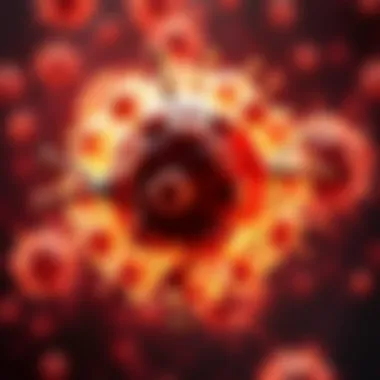

These scientific challenges necessitate not only research funding but also collaborative efforts across disciplines to streamline protocols and enhance reproducibility.
Funding and Resource Allocation Issues
Funding is a vital artery for fueling research and development in stem cell therapy. Unfortunately, securing adequate financial backing poses persistent challenges. The landscape of research funding can be likened to navigating treacherous waters:
- Resource Allocation: Many funding agencies prioritize areas with immediate clinical outcomes, leaving long-term experimental studies struggling for support. This often stifles innovative research that could yield groundbreaking therapies.
- Shift in Priorities: Political climates and economic strategies can drastically affect available funding, leading to fluctuations in resource allocation. As such, researchers must constantly adapt to an ever-changing financial landscape.
- Public and Private Funding: Both public institutions, like the National Institutes of Health, and private organizations, such as the California Institute for Regenerative Medicine, have different funding criteria. Navigating these can be daunting, especially for nascent projects.
To address the persistent funding issues, creating compelling narratives about the potential societal benefits of stem cell therapies could sway public and private investment toward supporting research.
Public Trust and Acceptance
Lastly, public trust and acceptance of stem cell therapies play a pivotal role in their success. It’s important to recognize that the perception of stem cell research is not uniform and varies widely.
- Misinformation: The proliferation of misinformation about stem cells can lead to public skepticism. Misunderstanding the science behind regenerative therapy can create barriers to acceptance.
- Ethical Concerns: Ethical considerations, particularly around embryonic stem cells, continue to stir debates. Navigating sentiments around these topics is critical to building trust.
- Patient Acceptance: For therapeutic applications to flourish, patients must feel assured of the safety and efficacy of treatments. Education and transparent communication about ongoing developments are essential to gain public support.
Building trust hinges on fostering public engagement through transparent dialogue, education, and inclusive discussions surrounding the science and ethics of stem cell therapy.
In summary, overcoming the challenges in stem cell therapy development is a multi-faceted endeavor that requires concerted efforts from scientists, financial backers, and the public alike. Only with a shared commitment to addressing these obstacles can the full potential of rejuvenation stem cell therapies be realized.
Future Outlook of Rejuvenation Stem Cell Research
Looking ahead in the field of rejuvenation stem cell research reveals a landscape rich with potential. The dialogue around this evolving area is not just scientific; it touches on numerous aspects of societal needs, medical ethics, and technological advancements. As we glimpse into the future, it's crucial to consider what lies ahead in terms of breakthroughs, societal impact, and holistic integration with other therapeutic methods.
Predicted Advances in Technology
As technology races forward, we can expect several groundbreaking advancements in stem cell research. One promising area is CRISPR gene editing. This technique is paving the way for tailored stem cell therapies, allowing scientists to target and modify specific genes with remarkable precision. Imagine a world where therapies can be customized at the genetic level, increasing efficacy while minimizing side effects. Another key advance is in bioprinting. Scientists are developing methods to print tissues and organs layer by layer using stem cells, creating scaffolds that can mimic natural body structures. Such technology holds infinite promise for organ transplantation and regenerative medicine.
Furthermore, AI and machine learning are set to revolutionize how we understand stem cell behavior. By analyzing vast amounts of data, these technologies may uncover patterns in cell regeneration and lead to novel therapeutic strategies. The confluence of these technologies is bound to enhance our capability to harness stem cells, making previously unattainable goals a reality.
Societal Impact of Rejuvenation Therapies
The implications of advances in rejuvenation stem cell research stretch far beyond the lab. As therapies become more prevalent, we could see a significant shift in public health paradigms. These therapies may offer hope for chronic conditions, allowing individuals to lead longer, healthier lives. Moreover, with significant breakthroughs in regenerative medicine, healthcare systems could face reduced financial burdens associated with long-term chronic disease management.
However, societal acceptance hinges on addressing ethical considerations and public education. As we move forward, fostering an informed public dialogue will be paramount. Ensuring patients and communities understand the benefits and risks is critical for wider acceptance. The future might not just be about scientific advancements but also about building a community that can confidently navigate this new landscape.
Integration with Other Therapeutic Approaches
In the coming years, one likely development will be the close integration of stem cell therapies with other medical treatments. The intersection of stem cell therapy with immunotherapy presents exciting possibilities. For instance, utilizing stem cells to enhance the efficacy of immune responses in cancer treatment could revolutionize oncology.
Moreover, combining stem cell techniques with gene therapies could pave new paths for tackling genetic disorders. This synergy may lead to therapies that not only repair damaged tissues but also address underlying genetic problems.
Ultimately, the marrying of approaches enhances our comprehensive treatment arsenal, offering patients more tailored care. This could see the emergence of protocols where patients receive a blend of therapies, maximizing their chances of recovery or health improvement.
As we stand on the frontier of stem cell science, the combination of technological prowess, societal shifts, and integrated approaches will determine our trajectory in health and rejuvenation.
Overall, the future of rejuvenation stem cell research is bright, with the promise of technology, a well-informed society, and multi-disciplinary integration forming the bedrock of progress. Keeping track of developments and educating the public will be vital in navigating this exciting yet complex landscape.
Ending
Rejuvenation stem cell research stands at the forefront of a medical revolution. This field is not merely about understanding the mechanism of stem cells; it delves into revitalizing aging tissues, restoring organ function, and potentially extending human healthspan. The possibilities are vast, and the implications are profound.
In this article, we have journeyed through the layers of stem cell types, their mechanisms of action, and the cutting-edge applications currently in clinical settings. By shedding light on the emerging technologies and trends, we aim to present a clear picture of where science is headed. Each section has highlighted the multifaceted nature of stem cell applications, from orthopedic rejuvenation techniques to neurological advancements. Underlying all these discussions is the ethical framework that governs research and application—ensuring that as we push the boundaries of what’s possible, we remain anchored in responsible practice.
An essential part of this discussion centers on public trust. The acceptance of stem cell therapies is crucial, and the more informed the populace is about potential benefits and ethics, the better the groundwork for smoother integration of these therapies into everyday medicine. Furthermore, acknowledging and addressing challenges such as funding gaps and technical hurdles is vital to maintaining momentum in research and development.
"As we stitch together the fabric of rejuvenation therapies, awareness, and understanding will play a pivotal role in shaping our collective future."
This conclusion doesn't just signal the end; it's also the dawn of a new journey. The potential for rejuvenation stem cell therapies is not just a goal but a pathway toward transforming health—where the interplay of innovation, ethics, and scientific inquiry leads to groundbreaking changes in human health. Hence, the future outlook isn't mere speculation; it's an invitation to actively participate in the unfolding story of rejuvenation stem cell research.
Summary of Key Insights
- Rejuvenation stem cell research is essential in redefining how we understand aging, focusing on restoring tissues and organs.
- Different types of stem cells, such as embryonic and induced pluripotent stem cells, each play unique roles in therapeutic applications.
- Mechanisms like cellular repair and immune modulation are critical in the effectiveness of stem cell therapies.
- Ethical considerations and public perception are foundational elements influencing research and clinical practices.
The Path Forward
The journey ahead in rejuvenation stem cell research promises to be an exciting one. Expectations for technology advancements—such as gene editing and precision medicine—are high. As we look to the future, interdisciplinary approaches combining stem cell science with genomics, nanotechnology, and AI can open new doors.
Moreover, as therapies become more integrated into standard medical practices, a continuous dialogue regarding ethical and public acceptance will be essential. Societal impact must be a primary concern; focusing on equitable access and outcomes can shape a future where rejuvenation therapies are available to all rather than a select few.
For more information on current trends and findings in stem cell research, visit Wikipedia or Britannica.







